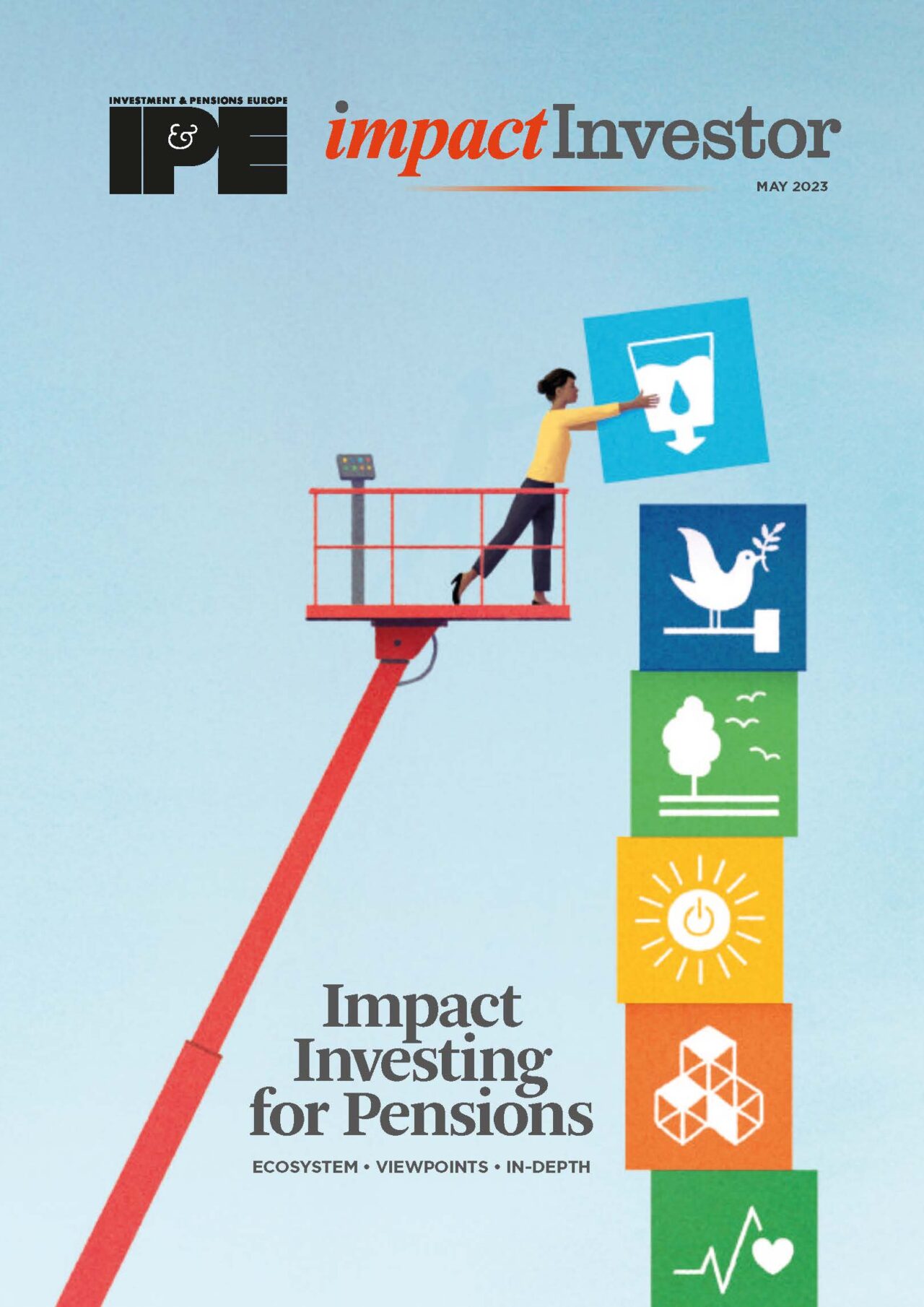We talk to the national advisory boards (NABs) for impact investing in the Netherlands, the UK and Sweden about their views on how local pension funds are embracing impact investing.

NETHERLANDS: Simona Benvenuti, Stichting Netherlands Advisory Board on Impact Investing
We aim to accelerate the mobilisation of capital into impact investing to reach at least 10% of pension fund AUM by 2025.
Dutch pension funds are becoming increasingly aware that in today’s world the systemic risk from ignoring environmental and social factors is extremely high, with scenarios in which financial returns are impacted negatively by externalities ever more likely.
More and more, the concept of fiduciary duty towards pension members implies providing a good pension for a liveable world. During a recent event with Pensioenfederatie, the Dutch pension funds federation, a poll of 50 Dutch pension fund representatives, revealed that 61% believe impact investing is a tool that can support their fiduciary duty. Members are also putting pressure on pension funds to embrace climate policies and are demanding a greater say in the choice of themes their pension funds invest in.
The good news is that regulation is slowly enabling more impact investing, with less stringent capital requirements for pensions, giving pension fund managers more flexibility to diversify their portfolios into alternative and more illiquid investment strategies.
Nevertheless, with the largest absolute volume of AUM in the market and only a small share (4-6%) of capital currently allocated to impact investing (and only about half of pensions stating they invest in impact), pension funds today have the biggest potential as investors to scale up their allocations to the sector.
But to drive greater investment momentum, will require a change to the excessively conservative investment culture built on short term risk and return considerations and a greater focus on longer term systemic risk. Governments can also embrace impact investing as a scalable and cost-effective instrument to achieve policy objectives. Public management systems could provide catalytic capital, guarantees and apply an impact lens to all public funds, and lessons learnt from the high initial implementation efforts and operational costs of legislation such as the SFDR, Dutch and European regulators would also do well to establish more harmonised policies in the future, that stimulate rather than complicate impact investing.
Co-investment with public bodies, such as the recent partnership bet-ween the European Bank for Reconstruction and Development (EBRD) and Dutch pension investor PGGM Vermogensbeheer to mobilise €250m of European pension fund capital for sustainable, low-carbon investments, could also drive investment into more asset classes and geographies.
Working towards greater cooperation, sharing of best practices and dilemmas, creation of and accessibility to wider market data, would also help to lower the barriers for the measurement, management and reporting of impact, build capacity and address greenwashing.
It is also worth noting that most pension funds focus on four or five SDGs, with investments aligned to the sectors they represent, the preferences of members, as well as the local impact implications. This means that some of the most crucial SDG financing gaps are not being sufficiently addressed and opportunities in developing and emerging economies due to the perceived high risk and difficulties of measuring impact, are underinvested.
As the Dutch NAB, our priority is to engage with pension funds through educational and practical workshops, such as our Inspiration Breakfast series, which consists of deep-dives into specific impact themes or asset classes, or through the market reports and case studies we publish on recent impact investments by Dutch pension funds.
We are also called on to present to pension fund boards and have also presented to pension fund stakeholders in cooperation with associations such as the Pension Federation, and we are currently contributing to a GSG working group alongside other NABs, pension funds and fund managers, to understand how we can mobilise more capital into impact. Through our work, we aim to accelerate the mobilisation of capital into impact investing to reach at least 10% of pension fund AUM by 2025.
UK: Stephanie Dawoud, Impact Investing Institute
There is still a widespread myth that impact investing means sacrificing financial returns.
We know that more capital needs to be mobilised to address the most urgent challenges we are facing as a society – rising inequality and climate change. We also know, according to research by the UK’s Financial Conduct Authority, that 81% of adults would like their money to do good as well as provide financial returns. The good news is that both realities are starting to translate into investor action. Pension funds represent one of the largest groups of institutional investors in the UK and the world. They have a critical role in helping to direct more capital towards investments that have a positive impact on people and the planet.
We know that pension schemes are not philanthropists. They are neither established nor run to solve social and environmental problems. But good long-term investing means investing in businesses that are going to be around in the future, businesses that contribute towards a healthy planet and thriving communities. Ultimately, pension funds invest people’s money, which should be used in a way that improves their lives.
Having worked with pension funds, their consultants, and advisors over the last four years, we have seen an increased appetite in impact investing. The starting point for many pension schemes is their desire to reduce negative impacts, which also represent risks, like carbon emissions, biodiversity loss, poor governance, and inequality – that both arise from and impact their portfolio. But there are two reoccurring barriers that are keeping the industry back in their impact journey.
Firstly, there is still a widespread myth that impact investing means sacrificing financial returns. Secondly, the common interpretation of fiduciary duty, the legal obligation of pension trustees to act in the best interest of pension scheme members, restricts pension funds in taking environmental and social considerations into account when making investment decisions.
One area of growing interest for pension funds is place-based impact investing – investments that deliver a risk-adjusted financial return alongside positive local impact.
The UK’s £326bn Local Government Pension Scheme (LGPS), for example, manages the pensions of people who have dedicated their lives to public service in their communities and who would like more of their pension to be invested locally. If 5% of LGPS investments were allocated to local investments, that would unlock £16bn focussed on delivering both financial returns and responding to the needs and opportunities of communities and places across the UK.
In 2020, Border to Coast, one of the English pension pools that manages the investments of like-minded local government pension funds with combined assets of £60bn, made a £40mn investment in a renewable energy plant in Lincolnshire. The plant is in the geo-graphical area of the asset pool and uses both locally sourced straw, the majority from within a 30-mile radius, and sustainable woodchip to generate renewable power and heat. It has the capacity to generate electricity for 65,000 homes, saving 50,000 tonnes of CO2 per annum and provides 30 direct local jobs and a further 50 in the fuel supply chain. The investment is a prime example of combining environ-mental and social impact.
We want to see more investments like this. To make it easier for pension funds to follow in the footsteps of pioneers like Border to Coast, we have created an evidence base made up of research and case studies, as well as practical tools. These include our Impact Investing Principles for Pensions, which provide practical guidelines on how pensions can pursue an impact investing strategy, as well as our legal paper, attested and reviewed by pension lawyers, that explains how fiduciary duty and impact investing are compatible.
Now we need to see action from across the pension sector and its champions, including ourselves, to up their game and help secure nothing less but our future on this planet.
SWEDEN: Jenny Carenco, Swedish National Board for Impact Investing
The majority of pension fund investment in impact is dominated by investments that reduce CO2 emissions because that is the main KPI that is being promoted by the taxonomy.
Impact is a really hot topic for pension funds in Sweden. From the seven state managed pension funds, which provide the basic state pension, to the large insurers and the more specialised smaller insurance companies managing pension money, everyone is trying to position themselves as far as they can along the sustainability and impact scale.
As a highly regulated industry, there are of course limitations to how much risk pension funds can take and the assets they can invest in compared with private or venture capital investors. This, inevitably, reduces the impact investment universe but perhaps the biggest issue for pensions is more fundamental – namely the ability to classify what impact investing actually is.
Confusion remains and definitions of what counts as impact differ wildly between pension funds. This makes it difficult for stakeholders to differentiate between products and be confident that their investments or savings are indeed impact and not just simply responsible.
This confusion has also seen many pension funds starting out in impact by managing real assets because the impact can be more easily measured. As a NAB we have acted as a sounding board to help them determine what impact is. We have also provided advice on fixed income investments, developing a framework together with one of Sweden’s largest insurers, in which the classification of a bond as impact is determined by the use of proceeds rather than by the issuer themselves. This helps the industry to understand that even a ‘may cause harm’ company can issue an impact bond as long as the proceeds from that bond are earmarked for a transformation towards a more sustainable way of producing something.
Pension funds, like other investors, will continue to try to put as much under the heading of impact as they can because of its popularity, until a more standardised definition evolves.
This has been complicated by the EU Taxonomy and the classification of Article 8 and 9 funds, which only focus on assets that are ‘dark green’ already. All this does is to incentivise investment into a much smaller pool of assets and obscures the opportunity for impact investment in brown assets that are transitioning to become more green and generating a transformational impact.
Social impact investments are also missing from the taxonomy and we know that building up green technologies whilst ignoring the need to invest in improving social welfare, will only have limited success. We have a saying in Sweden that no one will recycle if they can’t put food on the table and nowhere is this more salient than in impact investing.
Insurers managing pension funds also stand to benefit from investment into a well-functioning society where people are in good health, but as it stands the majority of pension fund investment in impact is dominated by investments that reduce CO2 emissions because that is the main KPI that is being promoted by the taxonomy.
The NAB is currently working on a report that focuses on financing for social impact, in which we will introduce other financing mechanisms such as blended finance, hybrid finance or revenue-based finance, that are better adapted to fund and scale social impact investments and well-suited to pension fund investment.
With clearer lines drawn on what impact is, and a greater focus on social as well as green, we can direct more pension capital to actual impact and incentivise transformational investments. That’s where the real impact to transform the environment and society lies.
This article is part of the editorial content of the Impact Investing for Pensions report. You can download a digital copy of the report here.






